
You really do not want voles (also called meadow mice) moving into your garden. They are larger than a house mouse or deer mouse but do not quite reach the size of an adult gopher or rat. Although it is said that they can mature to 5–8 inches long including the tail, they are most commonly on the smaller side of the range. With their charming pudgy shape, beady black eyes, small ears, soft gray/brown fur, and rather short and oddly furry tail, their appearance could be thought of as somewhat cute or endearing. That is, until you experience how quickly they can lay waste to your beloved garden.
When they are not ravaging your garden plants, these rodents spend much of their time hiding in their burrows. They are most likely to be seen during the cooler parts of the day such as dawn and dusk, when they dash from one burrow to another, or scurry from dining on your favorite plant into the safety of their burrows. The burrows have openings that are 1 ½ to 2 inches wide. There are often obvious runways from the burrows where soil is trampled down by their repeated scampering back and forth. Voles will happily burrow into both mulch and soil, and where there are dense weeds or long grasses (a favored habitat), voles will create distinctive tunnels through the vegetation.

Vole populations regularly go through cycles of low to high numbers. Their numbers generally peak each 3 to 6 years or so, but don't count on being able to guess when the next vole invasion will occur. These cycles are not predictable. Their numbers can increase to staggering amounts during a population explosion, soaring to as many as several thousand per acre.
If you have voles in your garden, you already know they eat a very wide variety of plants. Unlike rats and mice that are out and about wreaking havoc at night, voles are active both day and night, and year-round. Also, unlike rats and mice who have favorite foods and tend to go after sweet, ripe fruits and the most succulent vegetables, voles are not terribly picky. They will eat a wide variety of plants including zucchini, cucumber, green bean, tomato, and artichoke. Basil, dill and parsley are some herb plants that may be there one day and gone the next. Flowers such as marigolds, cosmos, yarrow, and sunflower are also part of their menu plan.
Voles do take an occasional break from their feeding frenzy to breed and can have 5 to 10 litters of offspring each year. They can have 3–6 young at a time. One redeeming quality is their short lifespan of just a few months to a year, and the fact that after a season of super high numbers, the population tends to go back to normal.
There are several effective control methods such as habitat modification (make the area less hospitable to them), trapping (setting many, many mouse traps), and exclusion (creating impassable barriers around your garden, your garden beds, or even individual plants).
Vole management
Habitat modification is an effective way to reduce vole damage in the landscape. Remove weeds, heavy mulch, and dense vegetative cover to reduce their food sources and expose them to predators. Voles prefer not to feed in the open so 4-foot buffer strips of open ground can help protect trees or other plants.
Because of the large numbers of voles that can be present during a population explosion, exclusion is often the most important option. Wire hardware cloth with ¼ inch or smaller mesh makes a good barrier if it is at least 12 inches tall. Make sure it surrounds the plants completely and bury it into ground 6 to 10 inches deep. Metal roof flashing, sold in hardware stores, makes a very effective barrier. It comes in rolls with varying widths. Unlike gophers, who dig deep burrows, voles usually dig down only a few inches. They are not very athletic and don't climb or jump very well like rats can, so barriers don't have to be terribly tall to be effective.
Trapping can be effective if vole numbers are low or they are in a small area, but difficult when the population is high. The key is to use many mouse traps at the same time. For detailed directions on how to place traps, see the link below.
Voles are an important part of the natural food chain. They are prey for a variety of predators including hawks, crows, owls, snakes, raccoons, bobcats, foxes, coyotes, opossums, and domestic cats. They may not keep vole populations adequately controlled near homes because of their reluctance to hunt close to homes.
There are toxic baits available, but care must be taken to ensure the safety of children, pets, and nontarget animals such as the predators listed above. See the link below for more information.
This UC IPM (integrated pest management) link is an excellent source for information on identifying and managing voles:
https://ipm.ucanr.edu/home-and-landscape/voles/pest-notes/#gsc.tab=0
This link will help you determine whether damage to your yard is due to voles, gophers or moles:
https://ucanr.edu/blogs/blogcore/postdetail.cfm?postnum=49119
Help Desk of the UC Master Gardeners of Contra Costa County (SMH)
Attached Images:
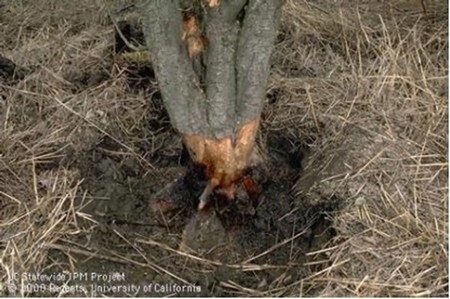
Vole damage to root crown and lower bark of a tree. Credit: Jack Kelly Clark, UC IPM
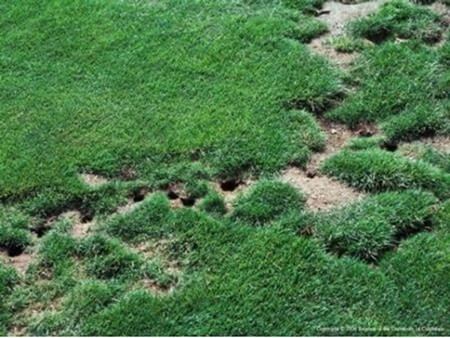
Vole damage to turf showing burrows and runways. Credit: Terrell P. Salmon, UC IPM
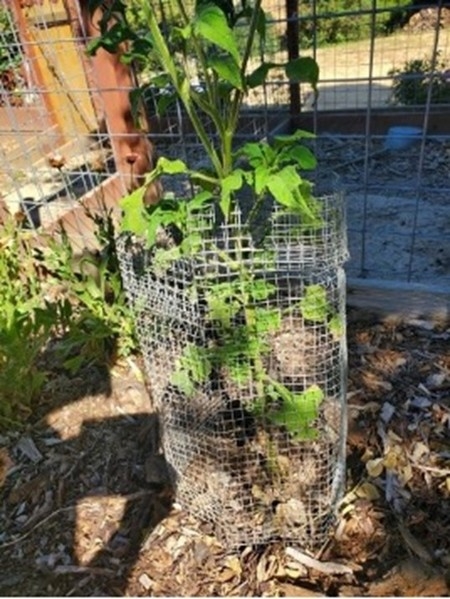
Hardware cloth barrier. Credit: S. Hoyer
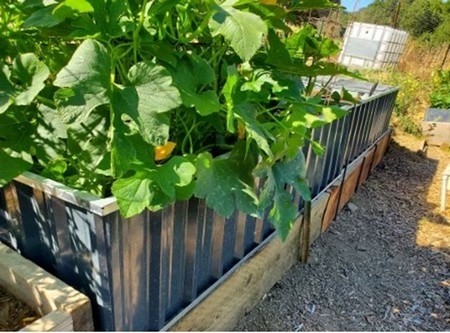
Because they cannot climb the metal sides, your plants can be safe from voles in beds like these. Credit: S. Hoyer
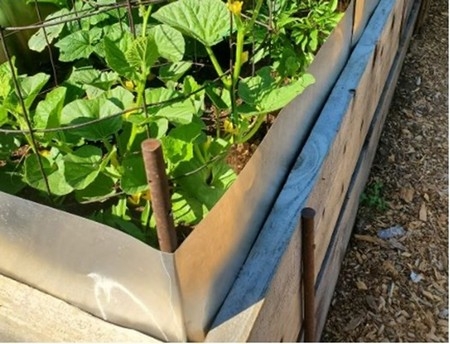
Another very effective option is to add an (at least 12-inch tall) metal flashing barrier to wooden raised beds. Credit: S. Hoyer
